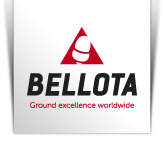
There is no one right way to work soil. You have probably seen fields of crops with different ‘drawings’. From straight longitudinal lines through to small mounds, or a huge bed of plant waste.
Agricultural professionals can choose which one to implement based on a wide range of criteria: the particular requirements of each crop, the orography of the terrain, its soil and morphological conditions, the climate, its commitment to conserving biodiversity, etc.
In order to ensure a crop develops correctly, tilling always involves a series of operations to prepare the soil before planting. The goals of tilling would be to loosen the soil, turn it over in order to bury weeds, uniformly distribute soil particles, control soil temperature, and reduce erosion risk, among others.
Types of tilling
There are basically three types of tilling: conventional, minimum tilling, and zero tilling.
Conventional tilling involves lifting or inverting the soil, generally with a mouldboard or disc plough, supplemented with several secondary tilling operations, as explained by agronomist Helio Catalán in his blog ‘More than machines’.
Bellota Agrisolutions manufactures all types of spare parts for ploughs from leading manufacturers, such as mouldboards, plough shares, tips, heel plates, blades and deflectors, for both reversible and fixed mouldboards. Bellota offers two models for chisel ploughs –the mini plough and the chisel plough– which are mounted with a chisel tine.
As for harrows, Bellota has discs for disc harrows and disc ploughs in a range of concavities and sizes. The stringent quality control carried out by the company ensures its disc harrows are completely regular, guaranteeing excellent workmanship. All of them pass the toughness test known as the ‘ball test’, which evaluates their fracture resistance. Bellota disc harrows were the first to be manufactured in boron steel.
The concept of minimum tilling refers to a system that seeks to reduce soil loss and conserve soil moisture, normally without inverting the soil. This practice is typical of conservation agriculture.
Some of the tools used are curved subsoilers, which are hugely important for soil cracking by breaking compacted layers without inverting the profile.
Minimum tilling can include methods such as strip and vertical tilling. VT-REX discs are recommended for use in soft soils and soils with residue, thanks to their deep penetration in the soil. Vertical tilling consists of preparing the soil with an implement that does not excessively invert or compact it, but rather pushes it forward in a vertical, ascending manner. Bellota’s Vortex discs are ideal for this purpose.
Another minimum tilling method is ridge tilling, similar to strip tilling. The difference lies in that it creates ridges up to 25 cm high, which can be semi-permanent or built every year. This is recommended in humid areas and in cold soils.
The third major type of tilling is zero tilling, which causes least soil disturbance. The crop is sown directly in soil left uncultivated since the previous harvest. It is the benchmark agronomic practice in conservation agriculture. Bellota has a wide range of seeding discs that can be used in zero tilling planter and seed drills.
All of these types of tilling have both pros and cons. It is the farmer who decides which one to plant. Bellota Agrisolutions’ job is to be at your side, offering the best solutions to work efficiently.
- Share
- Printable version

